NAP consistency is one of the most significant factors of local SEO, so how should you ensure your NAP listings are correct and optimized?
As a business owner, you should know the challenges that come with local SEO. Moreover, Google turns the spotlight on displaying search results for location-based searches and takes the location information on each business website and through other websites to serve those search results.
That’s where NAP (this stands for Name, Address, Phone number) comes into play. According to Moz, NAP consistency is one of the most significant factors of local SEO.
Download our Individual Member Resource – Managing SEO playbook
This guide is for marketing and digital marketing managers who need to manage Search Engine Optimisation (SEO), either through agencies, consultants or company specialists or through their own efforts.
Access the Managing SEO playbook
Unfortunately, many businesses neglect the importance of having consistent NAP information, assuming that search engines and customers are smart enough to find the right NAP data among different names, varying addresses, and inappropriate phone numbers. The truth is that ensuring your NAP profile is consistent and up-to-date on your website and other platforms is crucial for ranking well in local search results, gaining the SEO value, and increasing sales for your business.
SEO Value of NAP
Due to Google’s recent algorithm update influencing local search, having a consistent NAP plays an important part in Google’s Local Pack results and building citations to your Google My Business listing. Google looks at these citations to make sure you have a legitimate business to build trust among your potential customers.
The more listings you get with the same information, the more reliable you’ll appear to Google. Once users conduct a geo-targeted search, Google will use your information to display the most relevant, localized results. Otherwise, an inaccurate NAP can make your users frustrated and potentially mean you lose valuable customers.
Here are some examples of good and bad NAP listings:
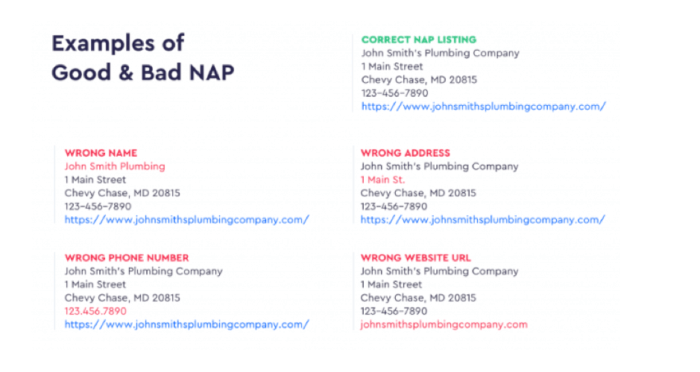
Knowing the basics, let’s look at the nitty-gritty details of what you can do to prepare your NAP profile for a local SEO run.
1. Conduct a quality audit
If you run a new business, you can do the paperwork properly to maintain NAP consistency. For local businesses that last a long time, it is essential to find out where they are already listed online. So, make a quick search to see how your business information shows up on multiple websites. You can search for your name, address and phone number, and then you combine two or three of these.
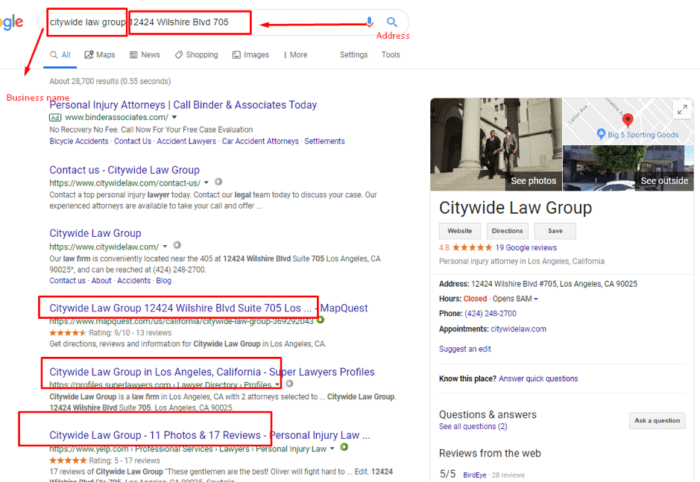
For getting a detailed website audit, you can use SE Ranking Website Audit to identify all external links you have, and all possible issues with your website. Once you find these citations and listings, make sure you organize them on your spreadsheet to figure out which ones require fixing.
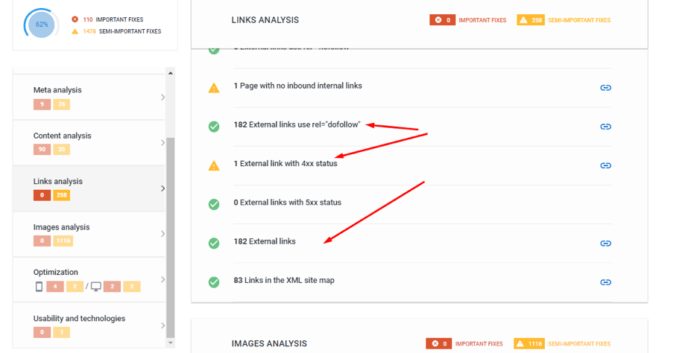
2. Double-check your business information
Before officially registering your business and sending it out to authoritative institutions, you should fill out some paperwork. Do the best to check out how your company’s legal business name, address, and phone number were originally recorded.
If you have moved your business to a new location or changed your phone number, keep your business information updated. You can just refer to the spreadsheet of your audit and check out where you need to update your NAP profile.
Another potential NAP issue is creating accidental duplicate listings for the same website. Multiple listings with bad NAP data can make users and search engines confused, meaning they don't know which listing to trust and rank. If you want to avoid these duplicates, try to remove them by claiming your business listing, going through the verification process, and contacting website owners. The best way to find duplicates is to use Moz Check Listing.
Using variations in your NAP profile can prevent you from reaching maximum visibility in local search results. For example, if you have earlier used "Yeargan & KERT LLC" as your business name, don’t change it to "Yeargan & KERT Law Group". Ensure to avoid variations, such as having different phone numbers for a particular business location.
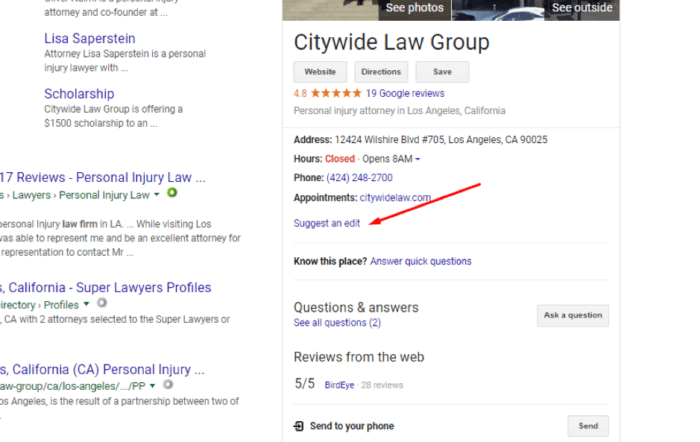
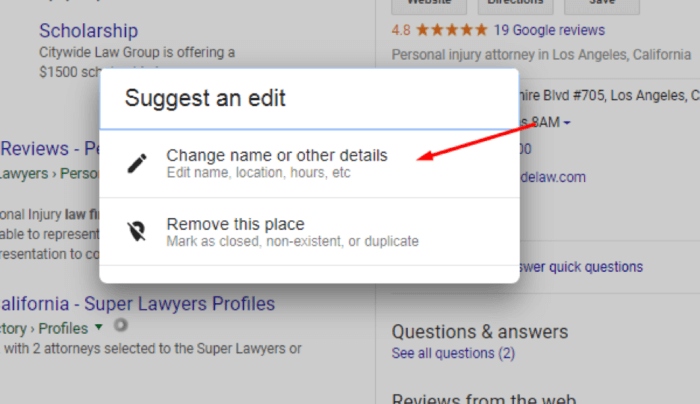
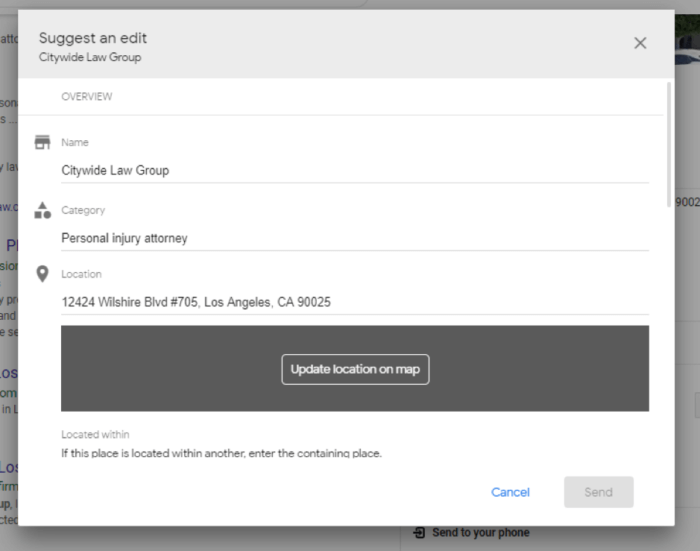
3. Update your website
Your website is your company’s face that helps both search engines and customers get your details right. For that end, all your data should align with your website to ensure that the NAP on your website is accurate and consistent with proper spelling and formatting.
The best practice for local businesses is to place your NAP data in particular areas like your header and footer to make it easy for people and search engines to read in a romp. Fernandez & Karney provides a good example by showing its business name, address and phone number in both its header and footer. Doing this will ensure your NAP information appears on every single page of your website.

It's also important not to forget to place your NAP info on your contact page. You can add it to your code, especially if you are using WordPress or a similar platform. However, I wouldn’t suggest putting in your title or description tags as it is usually a waste of space.
The text must be readable and crawlable by search engines. If you can copy and paste the information, search engines can read and index the NAP. But it is not good to have it only as an image.
4. Add local Schema markup to your website
As you know Google wants to provide the best results for any given search. The best way to do this is to add a Schema local business markup to your website that lets search engines understand your NAP info better. That way, you can get a more user-friendly display in local search results, called rich snippets. Just go to Google Structured Data Markup Helper to create your schema markup for local business.
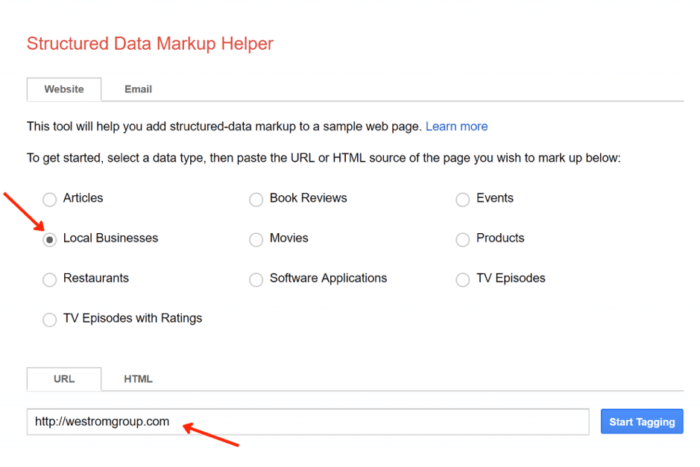
To check out whether you set up the code snippet properly, you can test it on Google’s Structured Data Testing tool. Google will give you some recommendations or additional warnings if you have missed something while filling in some tags.
5. Update your Google My Business profile
Google My Business is a critical component of any local SEO strategy. The best way to make search engines to trust your NAP info is to provide a piece of accurate and consistent information to Google - your Google My Business page. When updating your listing, check out whether the name of your business, address and phone number are listed the same way as on your website.
Notice that you can see a progress bar on the Google My Business dashboard when your page has reached 100% optimization. There are many other things you should add to your GMB listing, except the NAP data to reach the goal. Once Google verifies your business, you will see the correct NAP information in Google’s Local Pack when you search for your company.
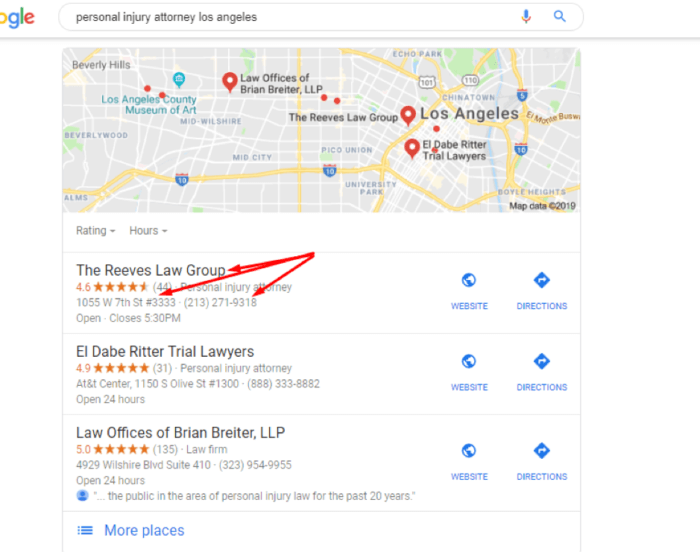
6. Update your listings and business directories
It’s definitely important to improve your local SEO efforts by listing your business on different directories to drive more traffic and leads. To find a list of trusted listings and directories, you can take advantage of the Business Listings module located under the SE Ranking Marketing plan.
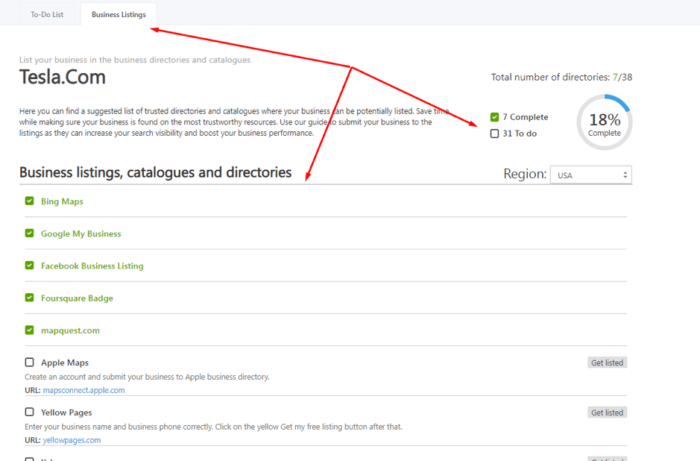
Use this guide to submit your NAP info to these listings in order to increase your business performance and boost your search visibility. Try to provide consistent NAP information for each location across business directories. It should match your paperwork, your website, and your Google My Business page.
7. Ensure NAP consistency for multiple locations
For businesses with multiple locations, ensuring clear location signals across the entire business can be tough. If you run different locations, you can include all your NAPs on each page. In reality, many companies neglect the business information they provide, and it results in losing potential new customers.
To maximize your NAP consistency for multi-location business, try to avoid the following mistakes:
- Use different phone numbers for a single business location. For each specific location, you need to have a local and consistent phone number across your Google My Business page, local directories and the location site page.
- Don’t update your NAP info for closed or moved locations.
- Including any NAP variations can have a negative impact.
- Have duplicate local listings that caused by business acquisitions and name changes.
Clearing up all these mistakes and managing consistent NAP info can result in much greater visibility in local results and having a positive effect on the entire business.
Conclusion
Google won’t prioritize websites they don’t consider are legitimate. NAP consistency is important for local SEO because matching NAPs legitimacy and improve the chances to rank your local business well. It also provides search engines and potential new customers with the most essential information about your business. This can be time-consuming and effective to your local visibility if you get it right.
Irina Weber is an experienced content marketing supervisor, blogger, and brand manager at
SE Ranking. She is passionate about content marketing, social media, and always keeps up with industry trends.

















